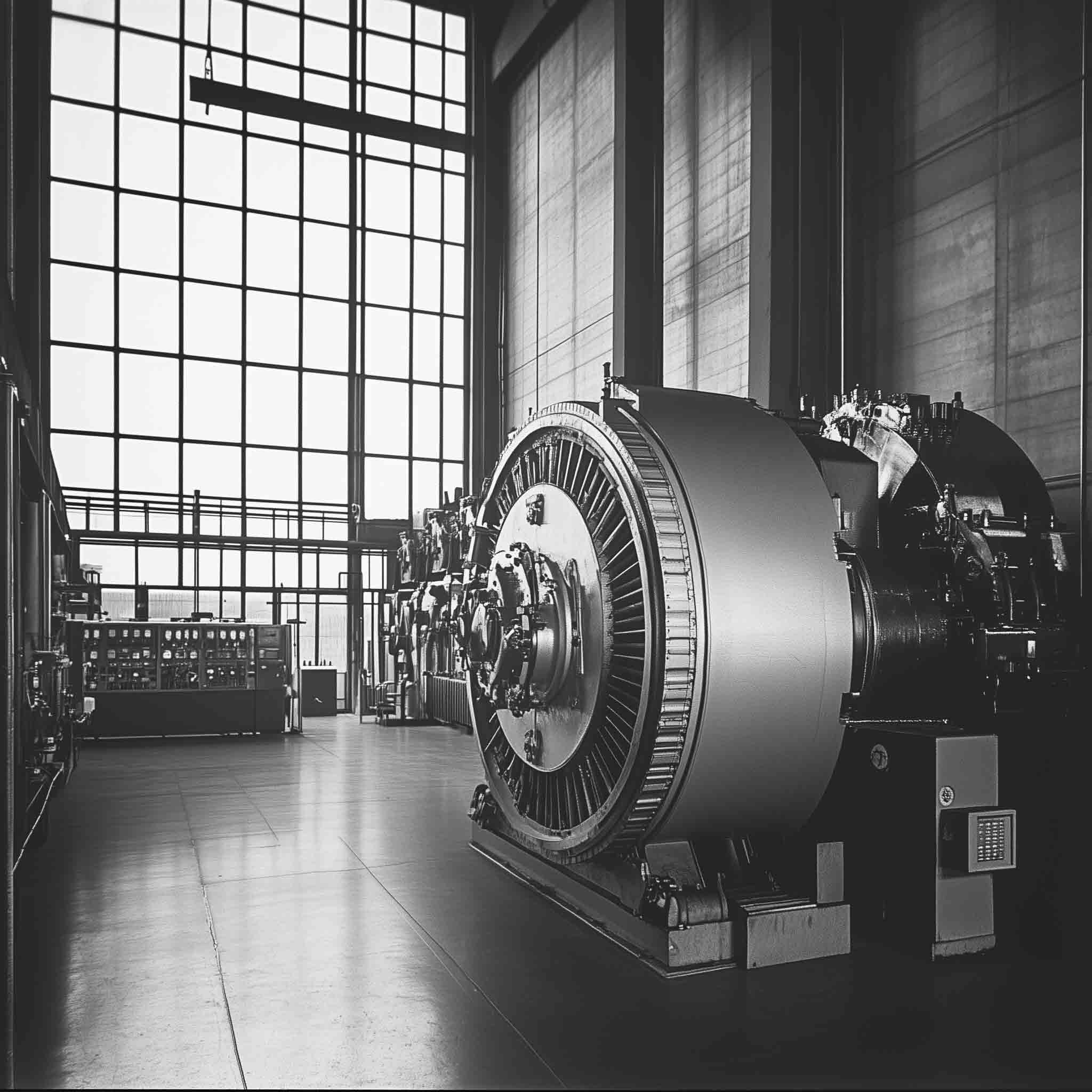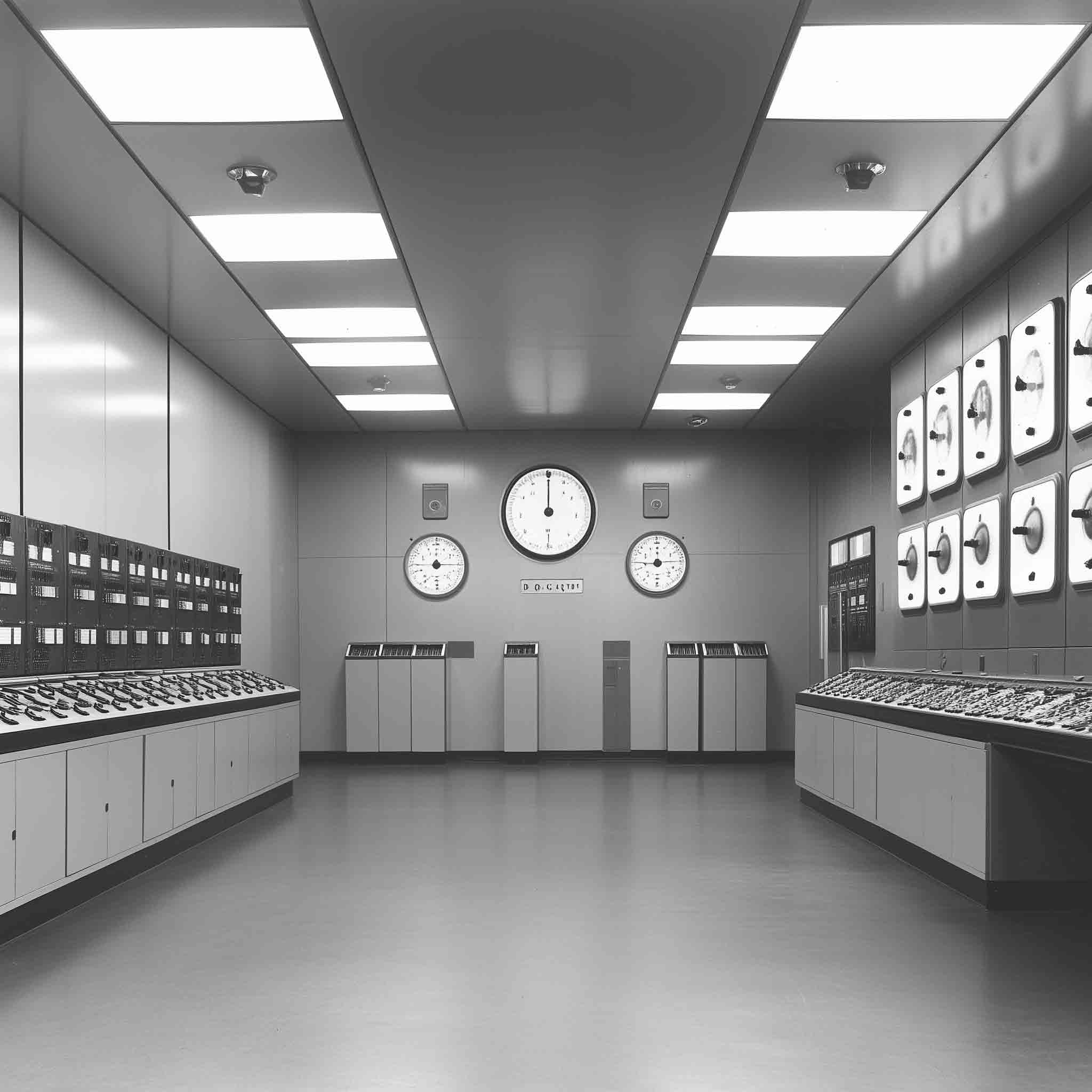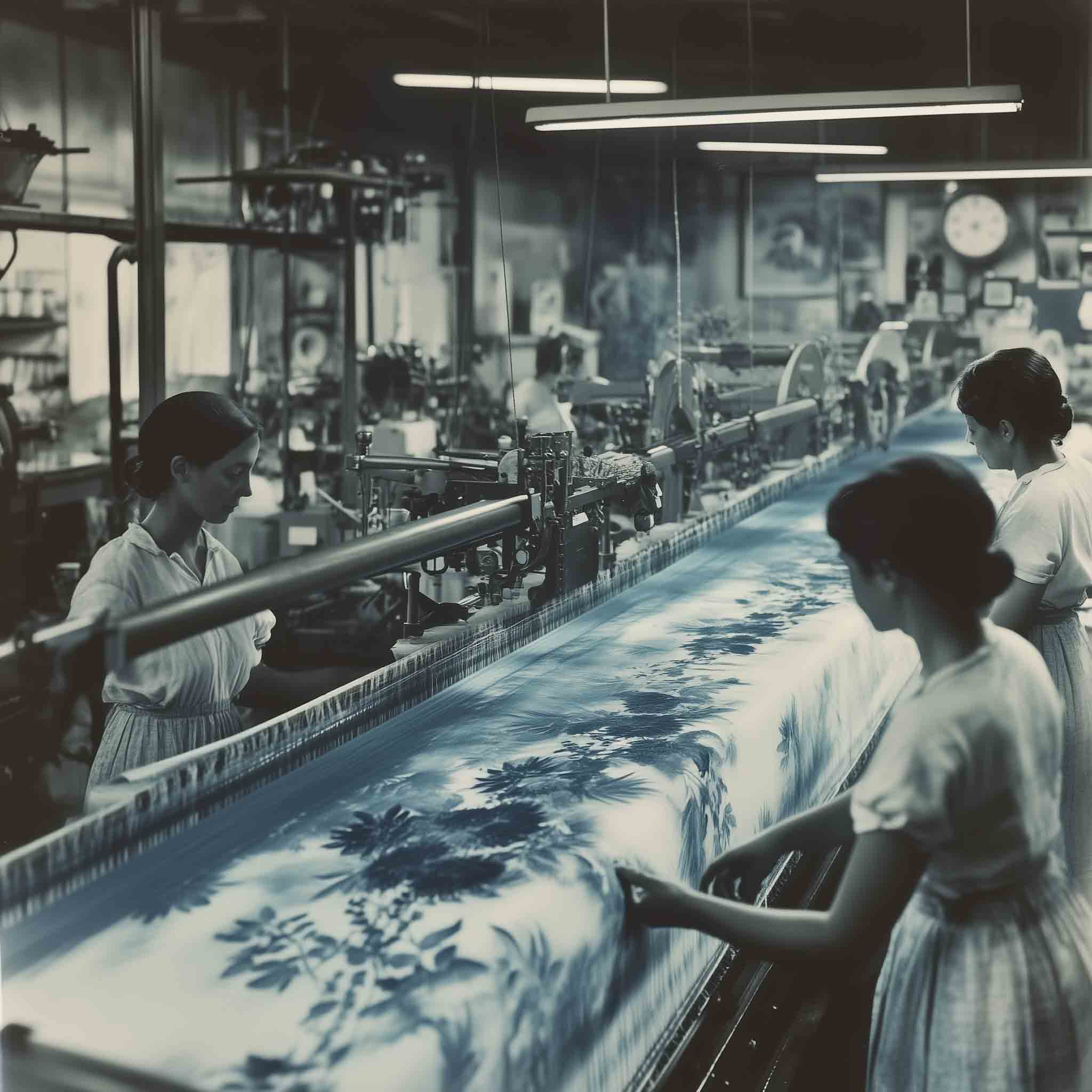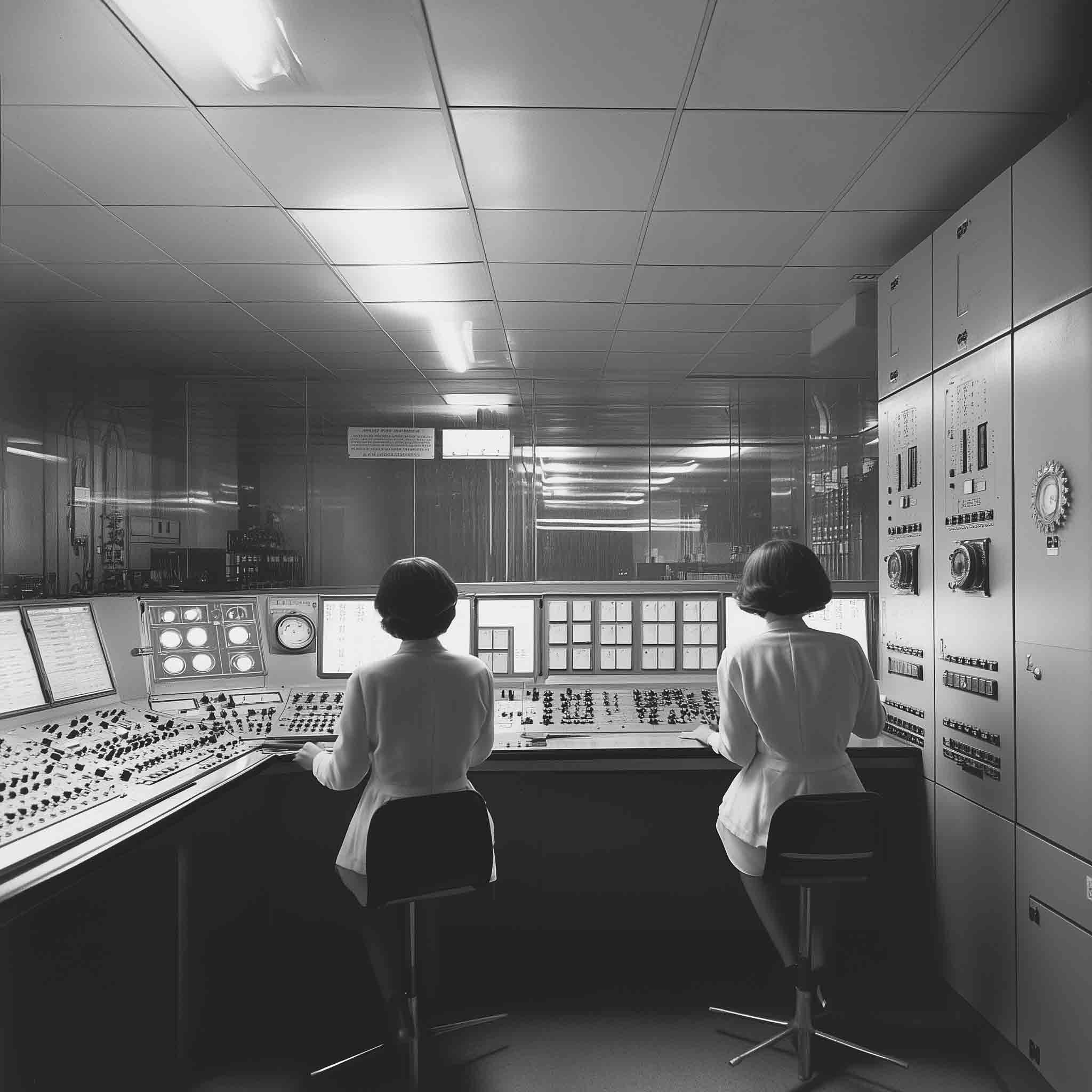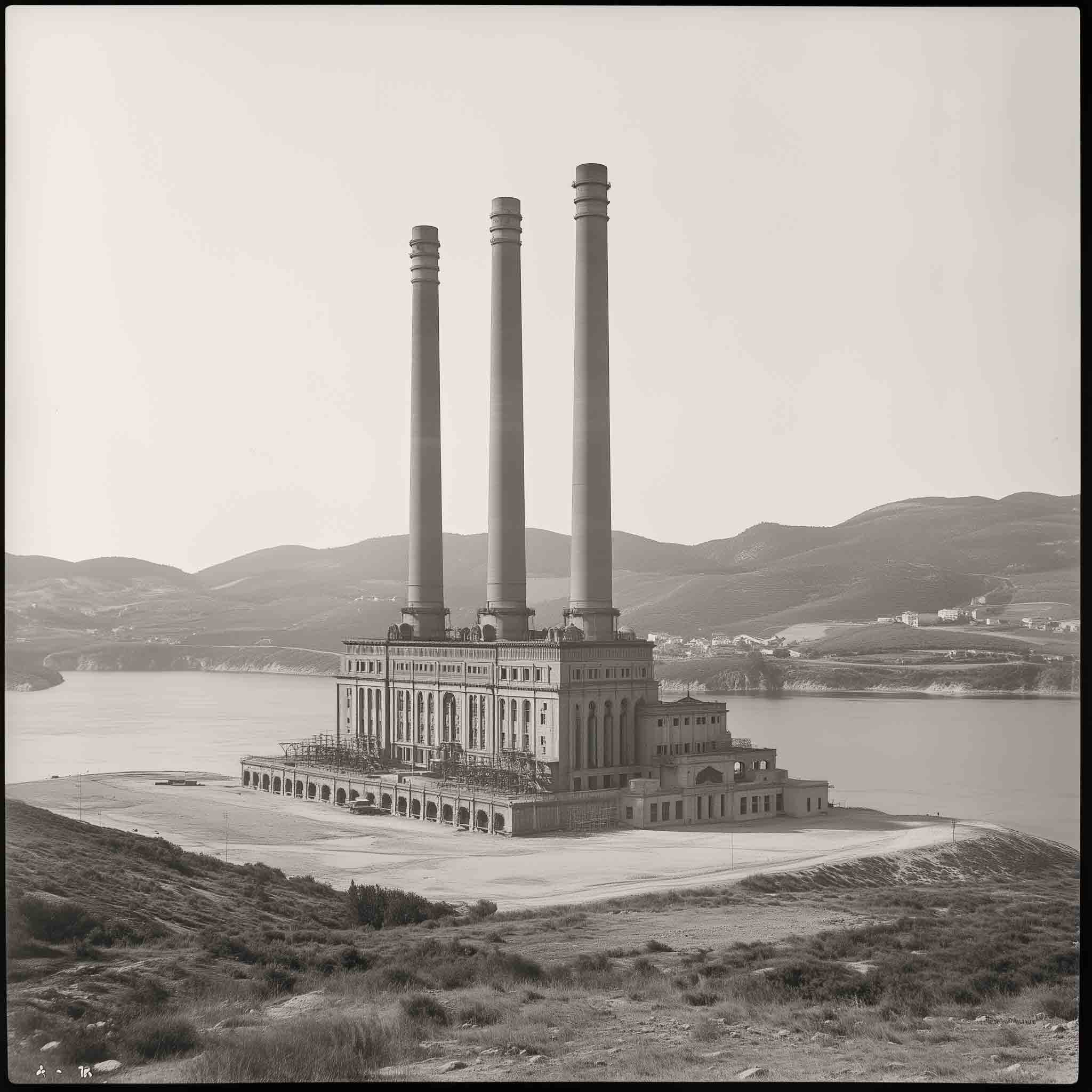Protocolo generativo (ii): infraestruturas da memória e as mulheres nas tecnologias têxtil e elétrica
TITULO: Protocolo generativo (ii): infraestruturas da memória e as mulheres nas tecnologias têxtil e elétrica
AUTOR: paula roush
PARTE DO PROJECTO: Um Olho Verde, o Outro Azul: Herbário do Antropoceno — livro [ + ] e instalação [ + ]
Esta coleção de imagens resulta da fusão de fotografias captadas durante caminhadas em deriva pelas ruínas fabris com materiais recolhidos em duas fontes principais de pesquisa online. A primeira fonte são blogues dedicados à arqueologia industrial e à memória urbana — como Caça Devolutos, Porto Sombrio, Amar o Porto e Monumentos Desaparecidos — onde circulam registos fotográficos e testemunhos sobre edifícios abandonados e infraestruturas industriais desativadas.
A segunda fonte provém da investigação académica disponível nos portais das universidades do Porto, onde se encontram documentos técnicos, estudos históricos e materiais industriais obsoletos — vestígios da desindustrialização da cidade. Nestes arquivos dispersos, emergem não apenas descrições sobre a maquinaria têxtil e industrial (incluindo a Central Termoelétrica do Freixo e a Empresa Industrial do Freixo), mas também rastros narrativos da transformação da paisagem pós-industrial de Campanhã.
Este levantamento revelou ainda a imbricação entre o Estado Novo, Salazar e Delfim Ferreira, expondo o cruzamento capitalista entre as indústrias têxtil e hidroelétrica na região. As fábricas que sustentaram a economia industrial estavam diretamente ligadas aos projetos de modernização do regime e às redes de investimento que estruturaram a exploração de recursos naturais e humanos. Neste contexto, destaca-se a trajetória de Delfim Ferreira, considerado à época o homem mais rico de Portugal. A sua influência económica estendeu-se até à Casa de Serralves, uma propriedade adquirida no auge da industrialização e posteriormente convertida no Museu de Arte Contemporânea de Serralves. Este percurso evidencia a transição de um capital industrial, enraizado nas infraestruturas fabris e energéticas da região, para um capital cultural, materializado na apropriação e reconfiguração patrimonial do espaço urbano e arquitetónico.
Utilizando um conjunto de textos e imagens de referência para treino, o LLM (Large Language Model) gerou prompts específicos para a recriação visual das fábricas e da sua memória. Esta abordagem procurou dar visibilidade à presença das mulheres nesses espaços de trabalho, deslocando o foco da narrativa industrial tradicional e introduzindo novas perspetivas sobre o tecido produtivo e social da época.
A reflexão de Sadie Plant em Zeros and Ones: Digital Women and the New Technoculture atravessa esta investigação. O trabalho feminino nas fábricas têxteis não pode ser dissociado do desenvolvimento das tecnologias de automação e dos sistemas que mais tarde dariam origem à computação. A produção têxtil não foi apenas um setor da economia industrial, mas um espaço onde mulheres operavam, reparavam e ajustavam as primeiras máquinas programáveis, antecipando relações entre trabalho manual, tecnologia e cibernética.
Diferentemente de outras coleções geradas por difusão latente, que enfatizam um aspeto técnico ou esquemático, as imagens desta série foram produzidas num estilo foto-realista, evocando a materialidade das fábricas e a fisicalidade dos corpos que as habitaram. O resultado não pretende reconstruir de forma objetiva esses espaços, mas sim explorar como as memórias da indústria e do trabalho feminino se inscrevem nas imagens, reimaginando o passado fabril através da interseção entre arquivo, ficção e inteligência generativa.
TITLE: Generative Protocol (II): Infrastructures of Memory and Women in Textile and Electrical Technologies
AUTHOR: paula roush
PART OF THE PROJECT: One Green Eye, the Other Blue: Herbarium of the Anthropocene — book [ + ] and installation [ + ]
This image collection results from the fusion of photographs captured during dérive walks through factory ruins with materials gathered from two main online research sources. The first source comprises blogs dedicated to industrial archaeology and urban memory — such as Caça Devolutos, Porto Sombrio, Amar o Porto, and Monumentos Desaparecidos — where photographic records and testimonies circulate about abandoned buildings and deactivated industrial infrastructures.
The second source comes from academic research available through the University of Porto portals, which host technical documents, historical studies, and obsolete industrial materials — remnants of the city’s deindustrialisation. Within these scattered archives emerge not only descriptions of textile and industrial machinery (including the Freixo Thermoelectric Plant and the Freixo Industrial Company) but also narrative traces of Campanhã’s post-industrial transformation.
This investigation also revealed the entanglement between the Estado Novo dictatorship, Salazar, and Delfim Ferreira, exposing the capitalist intersections between the textile and hydroelectric industries in the region. The factories that sustained the industrial economy were directly linked to the regime’s modernisation projects and the investment networks that structured the exploitation of both natural and human resources. Within this context stands Delfim Ferreira, considered at the time the richest man in Portugal. His economic influence extended to Casa de Serralves, a property acquired at the height of industrialisation and later converted into the Serralves Museum of Contemporary Art. This trajectory illustrates the transition from industrial capital—rooted in the region’s factory and energy infrastructures—to cultural capital, materialised through the appropriation and patrimonial reconfiguration of urban and architectural space.
Using a set of reference texts and images for training, the LLM (Large Language Model) generated specific prompts for the visual recreation of the factories and their memory. This approach sought to highlight the presence of women in these workspaces, shifting the focus of the traditional industrial narrative and introducing new perspectives on the productive and social fabric of the time.
Sadie Plant’s reflections in Zeros and Ones: Digital Women and the New Technoculture run through this research. Women’s labour in textile factories cannot be separated from the development of automation technologies and the systems that would later give rise to computing. Textile production was not merely an industrial sector but a space where women operated, repaired, and adjusted the first programmable machines — anticipating the relationships between manual labour, technology, and cybernetics.
Unlike other collections generated through latent diffusion, which emphasise technical or schematic qualities, the images in this series were produced in a photo-realistic style, evoking the materiality of the factories and the physicality of the bodies that inhabited them. The result does not aim to objectively reconstruct those spaces but rather to explore how the memories of industry and women’s labour are inscribed within images — reimagining the factory past through the intersection of archive, fiction, and generative intelligence
.
TITLE: Protocolos de impressão têxtil
AUTHOR: paula roush
MEDIUM: texteis impressos
No Herbário do Antropoceno, os gestos de impressão têxtil desdobram-se em dois modos distintos de relação com a imagem e a matéria: um baseado na presença vegetal e atmosférica, outro mediado por linguagem e sistemas algorítmicos.
Os protocolos de impressão com matéria vegetal envolvem contacto direto com o território — plantas recolhidas em deriva, tecidos reutilizados, soluções sensíveis à luz. são práticas situadas, ecológicas e tácteis.
Os protocolos de impressão generativa operam por via algorítmica: imagens criadas com base em descrições textuais e inteligência artificial, produzidas por redes neuronais treinadas. Estas imagens, depois de geradas, são impressas em tecido numa fábrica de impressão on demand, e posteriormente manchadas com solução de cianotipia — cruzando síntese maquínica e intervenção manual.
Estes dois regimes de impressão coexistem neste herbário expandido. juntos, desenham uma ecologia da imagem onde o gesto humano é apenas uma das forças que imprime, sonha, contamina e traduz o mundo em transição.
TITLE: Textile printing protocols
AUTHOR: paula roush
MEDIUM: Phytograms (contact and heat printing); Dirty pot (handcrafted eco-dyeing); Solar cyanotypes (light, fabric, and plant); dimensions variable.
In the Herbarium of the Anthropocene, the gestures of textile printing unfold in two distinct modes of relation between image and matter: one grounded in vegetal and atmospheric presence, the other mediated by language and algorithmic systems.
The printing protocols with plant matter involve direct contact with the territory — plants collected while drifting, reused fabrics, and light-sensitive solutions. These are situated, ecological, and tactile practices.
Phytograms (contact and heat printing)
Dirty pot (handcrafted eco-dyeing)
Solar cyanotypes (light, fabric, and plant)
The generative printing protocols operate algorithmically: images created from textual descriptions through artificial intelligence, produced by trained neural networks. Once generated, these images are printed on fabric in an on-demand printing factory and later stained with cyanotype solution — crossing machinic synthesis with manual intervention.
These two regimes of printing coexist within this expanded herbarium. Together, they trace an ecology of the image in which the human gesture is only one of the forces that prints, dreams, contaminates, and translates the world in transition.
contact
paula roush ::: paularoush@gmail.com
msdm studio ::: msdm@msdm.org.uk
